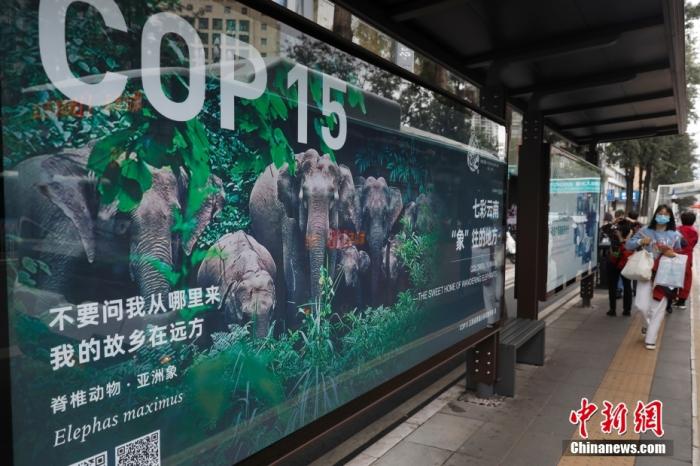China News Service, October 12-On October 11, the United Nations Conference on Biodiversity opened in Kunming, Yunnan.
The meeting will discuss the agenda items identified by the Bureau that are essential to the continued operation of the Convention on Biological Diversity and its protocols.
The United Nations website has a special report on the background of the convention.
The "Convention on Biological Diversity" (hereinafter referred to as the "Convention") was signed in 1992 and is the world's first convention on the conservation and sustainable use of biological diversity.
On October 11, the 15th Conference of the Parties to the Convention on Biological Diversity opened in Kunming, Yunnan.
The picture shows the scene of the opening ceremony.
Photo by China News Agency reporter Liu Ranyang
What is the Convention on Biological Diversity?
According to the United Nations website, in 1992, many world leaders participated in the United Nations Conference on Environment and Development held in Rio de Janeiro, Brazil.
A series of historic agreements were signed at the "Earth Summit", including the "Convention."
The Convention was quickly and widely recognized. At the Rio Conference, more than 150 countries signed the document, and so far 187 countries have ratified the agreement.
The "Convention" recognizes for the first time that the protection of biological diversity is a "problem facing mankind" and an integral part of the development process.
The agreement includes all ecosystems, species and genetic resources.
It links traditional conservation efforts with the economic goal of sustainable use of biological resources.
The "Convention" is legally binding, and the member states of the "Convention" must fulfill their due obligations.
The "Convention" reminds policymakers that natural resources are not inexhaustible and inexhaustible, and it puts forward a concept oriented towards the 21st century, that is, sustainable use.
Past conservation efforts aimed to protect specific species and habitats. The Convention recognizes that the use of ecosystems, species and genes must benefit humans.
COP15 posters on the streets of Kunming, Yunnan Province, October 11th.
On the same day, the fifteenth meeting of the Conference of the Parties to the Convention on Biological Diversity (COP15) opened in Kunming, Yunnan Province.
Photo by China News Agency reporter Li Jiaxian
Only with the participation of the whole society can we have a sustainable future
Catalina Santamaria, Special Advisor to the Executive Secretary of the Secretariat of the Conference on Biological Diversity, believes that the role of non-governmental organizations and civil society cannot be ignored.
Santa Maria said: “Non-state actors are critical to the future of our biodiversity. The advancement of ecological and human development goals requires the participation of the entire society to succeed. Non-state actors are committed to building a cleaner world. Contributed to reversing the loss of biodiversity and sustainable development in the future."
For the first time, the Convention brought people with different interests together.
By forming a new agreement among governments, economic interest groups, environmentalists, indigenous peoples and local communities, and relevant citizens, the Convention gives people hope for the future.
However, the Convention on Biological Diversity and its basic concepts are sometimes difficult to convey to politicians and the general public.
There is still very little public participation in discussions on how to make the sustainable use of biodiversity a part of economic development.
The transition to sustainable development requires a change in public attitudes.
How to use nature and how to maintain biodiversity requires a long-term public education process to bring about changes in behavior and lifestyle, and prepare society for the changes needed to maintain sustainability.
Santa Maria emphasized that only with the participation of the whole society can we have a sustainable future.
The ultimate decision maker of biodiversity is everyone.
The small choices made by individuals will accumulate into a huge impact, because the factor driving development is personal consumption, which in turn uses and pollutes natural resources.
By carefully choosing to purchase goods and supporting government policies, the public can begin to drive the entire world towards sustainable development.
Governments, companies, and other organizations have the responsibility to guide the public, but in the end, what is most anticipated is the thousands of choices individuals make every day.
Santa Maria appeals to everyone to take action now.
She said: “I encourage all of you to take bold and ambitious actions to join the biodiversity conservation agenda and lay a solid foundation for safeguarding global peace.”

